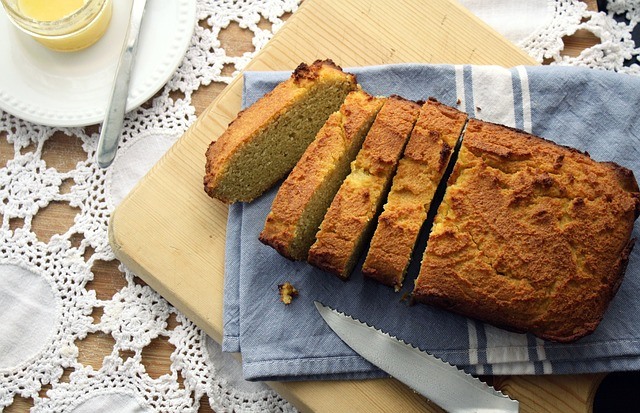What is low-carb bread? It may sound contradictory, but we promise that it’s real.
The typical bread in this day and age is made with flour from wheat grains, which is chalk full of carbs.

Carbohydrates, whether they’re simple or complex carbs, take forever for your body to process – and they essentially turn into sugar so far as your body is concerned.
Those that are looking to avoid spikes in blood sugar or to just simply make a healthy change in their diet should consider switching things up with low-carb bread.
Contents
What Is Low-Carb Bread?
The biggest difference between “normal” bread and low-carb bread all comes down to the ingredients, which must make up for the properties that wheat flour entails.
Some recipes will call for you to replace regular flour with almond or coconut flour, putting emphasis on fibre and protein rather than carbs.
Others may be more dairy- and fat-focused, asking to substitute flour for items like cream cheese, oils, and thickening agents.
By removing wheat flour to avoid the majority of carbs, you’ll generally be making rather dense bread, even if some are soft.

What causes bread to rise is the yeast cells within bread starters or yeast packets wheat bread require, and yeast needs simple sugars in order to thrive properly.
Since low-carb bread avoids most glucose, yeast generally won’t be in the recipes since they won’t function as they usually would.
However, fluffy bread is just one sacrifice to make in the quest to reduce carbs from your daily diet.
Not to mention, even if you can’t get the typical “fluffy” bread, you can still make a wonderfully soft and tasty variety!
Can I Buy Low-Carb Bread In Stores?
Be warned about buying low-carb bread at your local grocery.
Lots of companies like to capitalize on trends without providing a quality product – or they even just falsely advertise their breads to be low-carb.
In order to be true to your diet or lifestyle and know what you’re putting in your body, the best way is to make your own.
Don’t worry; it’s super easy.
What Diets Call for Low-Carb Bread?
Low-carb bread often falls within the realm of the keto diet – a low-carb, high-fat diet.
A ketogenic diet is focused on fats, since when the body runs out of glucose to process, it begins to burn fat.
Many keto breads are heavy in fats but end up being incredibly soft as a result.
Most use cream cheese, butter, and whipping cream, but they can also contain many fibre-based ingredients such as ground psyllium husk (a thickening agent), flaxseed, sesame seeds, and alternative flours.
See also: what types of bread have the least calories?
Here’s a video showing low carb bread recipes you can try.
What Thickening Agents Should I Use?
Wheat flour acts as a thickening agent, so when you replace flour with ground nuts or dairy products, you’ll need to use some kinds of thickening agents to make up for the loss.
Ground psyllium husk is a great source of fibre as well as a great thickening agent. Not many people have heard of psyllium but it’s 100% natural, made from the husk of the Plantago ovata plant’s seeds.
Warning, because it’s a rich source of fibre, it may act as a laxative to some people in high enough quantities.
More common thickening agents are cream of tartar and cornstarch.
If a recipe calls for any of these thickening agents, mix them in with one of the liquids directed in the recipe.
It just makes it easier to evenly distribute through your recipe since it has a tendency to clump up, whereas you can control how well blended it is if you handle this yourself in a small bowl or teacup.
What About Adding Fruits to My Low-Carb Bread?
Seeds are high in protein and fibre, and are a great alternative when making low-carb bread that doesn’t involve dried fruits.
While fruits may sound healthy, they’re extremely sugary and will be processed in your body as glucose, the same as carbs.
Chia seeds, pumpkin seeds, sunflower seeds, and sesame seeds are some varieties you can mix in your bread or put on the top.
Can I Use Different Flours?
Often, these breads will use alternative flours, often made from nuts or the meat of the coconut.
Almond flour is very popular as, once its finely ground, it does not have an almond-y taste, making it a very neutral base to build on for most breads.
Keep in mind that while almond flour is great, it contains inflammatory fatty acids and enzyme inhibitors.
Coconut flour is non-allergenic as it’s a seed, not a nut. Coconut flour makes a rather fluffy alternative flour (so long as you don’t pack it when measuring).

Some of the cons of using coconut flour is that it’s not a very binding product, it will not work well with egg substitutes when cooking, and the excessive fibre may irritate those with sensitive stomachs.
Like any food, low-carb bread comes with its own pros and cons, but are extremely viable to people that want to cut out carbs, gluten, or glucose from their daily diets!
What’s your favourite low-carb bread recipe?
